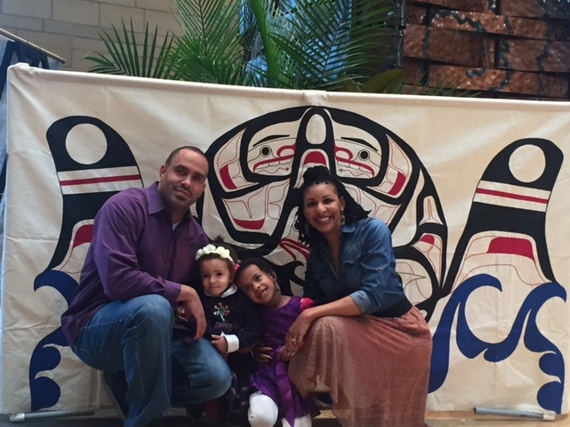Co-written by Rogelio Tec Moo
Each year during the national holiday of "Thanksgiving" my family and I go to the National Museum of the American Indian in Washington, D.C. We go as an annual reminder of the past and current struggles of Native Americans. An important example of this centuries-old struggle for Native American self-determination is in today's headlines as Indigenous peoples and their supporters continue a historic standoff with the government and private security forces over the Dakota Access Pipeline that threatens the Standing Sioux Reservation.
The ongoing everyday struggle of Native Americans to live a life of self-determination in the midst of an economy plagued by deep and divisive racial economic inequality is a story that receives much less headlines. For centuries, the U.S. created much of its wealth by appropriating Native American land. Decades of intentional U.S. governmental policies stripped Native Americans from their land and resources creating a racial wealth divide between them and White Americans. Today, Native Americans stand with African Americans and Latinos on the asset poor side of the racial wealth divide.
In 2011, the American Community Survey (ACS) reported Native Americans have the highest poverty rate among all minority groups. Their national poverty rate was at 27.0% - 1.2% higher than African Americans, 3.8% higher than Hispanics and 15.6% higher than the White national poverty rate during the same period. It must be noted that there is little socio-economic data collected about Native American peoples that much of the numbers cited are roughly five years old.
Moreover, the ACS for American Indian and Alaska Native Alone Population did an income report of Native Americans in 2013. They found that the median income of Native Americans was roughly $36,252 - slightly higher than the median income of African American households where the median income was $34,598. Altogether, these numbers pale in comparison to the White household median income of $58,270.
In terms of unemployment, Native Americans have had similar struggles. According to the Bureau of Labor Statistics, the unemployment rate for Blacks was 16%, Hispanics was 12.5% and Whites was 8.7%. For comparison, the unemployment rate for Native Americans was 17.9% - according to the ACS estimates during 2010.
All of this data highlights how the reality of Native American disenfranchisement and marginalization is a story that one does not need to go to a museum to see, but rather is a reality lived every day by Native Americans. The good news is that Native Americans resistance as seen in the struggle against the Dakota Access Pipeline continues to this day. Economic development has been a central struggle for Native American people. The emergence of community development financial institutions (CDFIs) like the South Dakota Four Bands Community Fund have been an important step in creating long term pathways for financial stability and security for Native American people. In 2009, the Native CDFI Network began with the purpose of bringing together Native Americans CDFIs from across the country to strengthen national advocacy and economic resources for Native American people.
Native American people across the country continue to organize to move the country beyond its history of inequality and disenfranchisement and as usual it is up to the rest of this country to finally follow Native Americans lead in creating a country where all truly have the opportunity and access to resources that allow for self-determination and financial stability.

